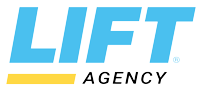Spring Discount: 45% Off Three-Part Series
Free Lifetime Workshop Updates
Individual workshops $300 each, now 25% off—$225 each.
Special Series Pricing: All three Google Analytics 3.0 workshops $900 now 45% off—$495. Enroll here.
Pre-recorded workshops included with each Live class.
Introduction:
Why Take this Course
Web analytics is a necessity in digital marketing. Web analytics gives you data so you can make decisions in your digital marketing campaigns (SEO, SEM/PPC, social media, email, and so on) to increase your results. This three-part workshop series shows you how to install and use Google Analytics 3.0.
Note: Google Analytics 3.0 versus Google Analytics 4.0
Google released a new version of analytics in October 2020, called Google Analytics 4.0. Although they called it an update, it’s a new form of analytics.
- Google Analytics 3.0 (or or GA 3.0) tracks web pages (clicks, visitors, and so on).
- Google Analytics 4.0 (GA 4.0), in contrast, tracks audiences and events across all devices and platforms, including websites, apps, and so on. As a result, GA4.0 is a fundamental change in understanding web data.
- This course focuses on Google Universal Analytics 3.0 (GA3.0). We also offer a course on GA 4.0, which you can read about here.
Google announced Google Analytics 3.0 will begin to shut down in July 2023. However, Google has often announced deadlines (for example, HTTPS, dynamic pages, mobile-first, and so on) and then extended them for several more years. Over 30 million websites use Google Analytics 3.0, and it’s doubtful they will switch in time. Furthermore, Google Analytics 4.0 is incomplete at the moment. Google continues to add, move, rename, or delete items. As a result, Google Analytics 4.0 may not be complete by July 2023. We expect GA3.0 may continue to 2025 or 2026.
Our recommendation:
- Thirty million sites use GA3.0, which includes webmasters, web developers, staff, agencies, and consultants. It will take several years for them to switch to GA4.0.
- Use both GA3.0 and GA4.0 because they do different things.
- Learn both GA3.0 and GA4.0 so you can work with people who use one or the other.
(Can’t attend a live workshop? No problem. All workshops are recorded, and we’ll send you the recording, workbook, and any supplementary materials within a day of completion after we’ve had time to edit the recording.
Workshop dates and times:
Module 1: Google Analytics 3.0—Installation and Configuration.
Pre-recorded.
Module 2: Google Analytics 3.0—Know Your Visitors and How They Found Your Site.
Pre-recorded.
Module 3: Google Analytics 3.0—Know Your Site Visitor’s Behavior and the Conversion Actions They’re Taking.
Pre-recorded.
Module 1: Google Analytics 3.0—Installation and Configuration.
Special Pricing, Module 1 Only (Pre-recorded): regularly $300 now $225. Enroll here.
Special Series Pricing: All three Google Analytics 3.0 modules $900 now 45% off—$495. Enroll here.
Description:
Web analytics is a necessity in digital marketing. You use web analytics to get data so you can make decisions in your digital marketing campaigns (SEO, ads in search and social, social media posts, email, and so on) to increase leads, sales, and ROI.
In this first workshop, we install and configure Google Analytics 3.0. We start with the tracking tags. We then look at how to set up and customize views, dashboards, automated reports, and alerts. Finally, we look at how to use filters to clean your data.
You can follow along with your Google Analytics 3.0 account or the publicly-accessible Google Analytics 3.0 account.
Key Takeaways:
- Install and configure Google Analytics (Google Analytics 3.0).
- Brief comparison of Google Analytics (Google Analytics 3.0) and Google Analytics 4.0.
- How to get access to a working public version of a Google Analytics account.
- How to find the tracking tag and how to install it on your website with WordPress, Wix, by hand, or with Google Tag Manager.
- How to check if the tracking tag is on every page of your site.
- How to set up and use views.
- How to set up and use dashboards.
- Use the calendar to compare time periods, such as this quarter versus the same quarter a year ago.
- How to set up and use automated reports.
- How to export reports.
- How to set up and use custom alerts to know if your site has crashed or there is a traffic spike.
- You get twelve filters and settings to remove junk data or get clean data. We’ll show you how to install these filters step-by-step, with full details so you can add them to your Google Analytics account.
Module 2: Know Who Your Site Visitors Are and How They Found Your Site.
Special Pricing, Module 2 Only (Pre-recorded): regularly $300 now $225. Enroll here.
Special Series Pricing: All three Google Analytics 3.0 modules $900 now 45% off—$495. Enroll here.
Description:
In this second workshop, we go through the first three major report sections of Google Analytics 3.0: Real-time, Audience, and Acquisition, menu by menu, so you can see how to find information.
We will cover the first three major sections of Google Analytics 3.0:
- Real-Time Report: Who is on your site right now?
- Audience: Who is visiting your website?
- Acquisition: How did those visitors find your website?
By knowing who your visitors are, you can make changes to your website to attract the audience you want. This also lets you know where to focus your marketing effort. For example, if your audience is arriving via search engines, then you can do more with search engines. Or, you can put your efforts there if they are coming via social media.
This helps in discussions over where to allocate staff and budget. Should the website be translated to French? Is there a market in Canada? Should your website be designed more for desktop users or only for mobile users? All of this, and many more questions, can be settled with analytics. Analytics gives you insights into your audience.
You’ll also see how to add segmentation in your analytics data. For example, you can separate and compare the traffic by desktop versus mobile users. This is easy to do and has a powerful impact in presenting your data.
Key Takeaways:
- How to use segmentation to refine the view of your data. You can create your own data segments and then compare data, for example by device (desktop, mobile, and tablets), location (US, Canada, Australia), and so on. You can also compare traffic sources such as direct, organic, search, paid, and referral. Your presentations will be better.
- We look at real-time reports and how to understand the data.
- We then look at the Audience Report. Who is visiting your website? We can see their age, gender, and the language and device they use.
- We can also see the topics they’re interested in and what they are buying on the web.
- You can also see their location by continent, country, state, or city. This lets you decide where to show your ads (or turn them off).
- Knowing your audience allows you to design articles and images that appeal to them. You can also make decisions about pages, translations, markets, and so on. You can use this to choose better ads, content, and images for your digital marketing.
- A powerful feature is benchmarking, which shows how your digital marketing compares against your competitors. You can see if you should increase efforts in a channel.
- We look at the Acquisition Report in the second half of this workshop. This shows you how you acquired your visitors. For example, did they come via search engines, paid search, email, or social media (Facebook, Instagram, LinkedIn, Twitter, and 62 additional social media sites)? By knowing this, you can focus on what works and shut down what doesn’t work.
- The Acquisitions Report also shows you the keywords that triggered your ads, the keywords that triggered your pages in search results, and how your pages rank in Google.
- You’ll also see how to use UTM tags to mark your social posts and ads to get reliable data.
- We close this session with slides about the difference between free and paid versions of Google Analytics, including how to know if you’re close to the limit for a free account.
Module 3: Know Your Site Visitor’s Behavior and the Conversion Actions They’re Taking.
Special Pricing, Module 3 Only (Pre-recorded): regularly $300 now $225. Enroll here.
Special Series Pricing: All three Google Analytics 3.0 modules $900 now 45% off—$495. Enroll here.
Description:
In the third Google Analytics 3.0 workshop, we cover the last two major reports: Behavior and Conversions:
- The Behavior report shows you what your visitors are doing on your website. What are the entrance pages to your site? What pages do they look at? What pages do they ignore? This is all practical information to make changes to your website. You quickly see if the change was good or bad so you can make further changes. You’ll see how to select the pages to improve. By improving the bounce rate for a page, you’ll have more visitors, leads, and sales. In addition, the better the bounce rate, the higher the page will show up in Google.
- The Conversion report also gives you practical information. If a page in your conversion path is leaking too many users, you can fix that page to get the users to go to the next step in the conversion path. This increases conversions without additional marketing. You’ll also see how to set up conversion tracking and visualize the data with a conversion funnel. This is very useful with clients and decision-makers.
- Additional items about Google Analytics 3.0: Heat maps, access permissions, multiple websites in one analytics account, Google Data Studio, analytics on your mobile, and insights.
- Finally, we’ll give you a list of the six best reports in Google Analytics 3.0.
Key Takeaways:
- Use heat maps to see where your visitors click on your pages.
- You can pull all of the data into one analytics report if you have several websites.
- You can flow your data into Google Data Studio to create better presentations.
- The Google Analytics app lets you use Google Universal Analytics on your iPhone or Android phone.
- How to use the Insights panel for additional business information.
- The Behavior report shows you how visitors flow through your website.
- Landing pages, the different definitions, and what it means for Google Analytics.
- Deep dive into the Bounce Rate report. See the bounce rate for a page and how to fix it. First, you can see from where the visitors came and the keywords they used, which may help you to make changes to the page, so it offers what they expected to see. Going further, you can see the page’s bounce rate over time. You can use this to make a change to the page and then see if the change improved (or hurt) the bounce rate. By testing changes, you can improve the page’s bounce rate.
- We also give you guidelines about bounce rates: good, okay, and poor.
- The Behavior report also shows two reports for the loading speed of a page. This helps you decide where to start.
- You can also see the search terms people use in your site’s search box. This helps you to improve the navigation or give you ideas for additional products.
- We look at the Conversions Report. You use the Conversions Report to track goals. You can see if a page in your conversion path is leaking too many users. By fixing that page you get the users to go to the next step in the conversion path, so you can increase conversions without additional marketing.
- You’ll see how to configure goals. Just about anything can be tracked at websites.
- Conversion can include engagement, such as the number of downloads in the last 30 days, how often a video was watched, how many used the mortgage calculator, how many reached five pages in your website, or how many spent (for example) five minutes on the site in the last 30 days.
- Conversion can include lead generation (lead gen), such as how often an information request form was submitted, the email link was clicked, or how many people subscribed to the newsletter.
- Conversion can include sales. You can track the number of purchases per quarter, the amount of revenue on average per week for the last six months, and so on.
- We will also see how to visualize the data with a conversion funnel. This clearly shows the steps that visitors take in the conversion path and where they drop out of the path. By fixing these pages, you increase your conversions without additional marketing.
- We close with a list of the six best reports in Google Analytics 3.0.
- In addition, there is a list of resources from Google, including Google’s internal information library, links, and other eBooks.
How to Convince Your Boss Why You Should Take this Class:
With objective data, you can manage staff, agencies, or contractors. Your teams can create and manage digital marketing that reaches your business goals.
Google Analytics shows you what works or doesn’t work. Use data (not guesswork, tradition, or opinions) to make marketing decisions.
The Presentations:
- The Google Analytics 3.0 workshops are hands-on and practical.
- You’ll see many examples, tips, notes, and insights so you’ll understand how to use Google Analytics 3.0.
- The workshops are live online, so you can ask your questions.
- Can’t attend live online workshops? No problem! All DMAnc.org workshops are recorded. If you have questions, you’re welcome to email the instructor.
- Screenshots with step-by-step instructions in numbered lists with links.
- You can copy the examples, edit them, and use them in your work.
- Each section has handy checklists that you can use for your work.
Download Material:
- Video of the presentation with slides and audio.
- PDF of the complete presentation.
- The KPI eBook by Andreas Ramos explains KPIs, including CPL (Cost-per-Lead), CPA (Cost-per-Action), BEP (the breakeven point), and more.
Who is the course for?
By understanding Google Analytics 3.0, you can do the work yourself or manage your team, agency, or consultants. For example, marketing managers, digital marketing managers, marketing analysts, social media managers, creative directors, agency account directors, and media planners in B2C and B2B companies, government, and non-profits can use Google Analytics to understand their digital marketing data.
The Presenter:
Andreas Ramos
Vice President, Digital Marketing
Beasley Direct and Online Marketing, Inc.

Andreas Ramos has over 20 years of professional experience in SEO and digital marketing. He was the head of Global SEO at Cisco, where he worked with 44 languages in 85 countries, and the digital agency at Acxiom. He has worked in digital marketing since the mid-90s for small startups and global companies. He is the author of 22+ books on SEO and digital marketing. His book on SEO was published in three languages by McGraw-Hill. You’ll learn hands-on Google Ads from one of the leading experts in Silicon Valley.
Testimonials





